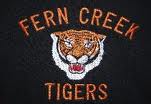

Creeker Chronicles
A compendium of anecdotes and stories by
Contributing Editor Ross Simpson
Thunder Over The Blue Ridge


A P-51 Mustang with D-Day white stripes on its wings flies over the home of the 167th Airlift Wing at Martinsburg, West Virginia which was originally constituted as the 369th Fighter Squadron in December 1942. The squadron flew P-51 Mustangs over Normandy in 1944.
The cargo bay of the C-5 Galaxy transport plane the 167th Airlift Wing flies is so big, a small private plane can fly through the rear entrance and out the front of the cargo bay without touching its wingtips.


An A-10 Thunderbolt II from Moody Air Force Base in Georgia demonstrates its capability as a tank killer with a 30mm Gatling gun in the nose and enough rockets, missiles and bombs to provide close-air support for American forces in Iraq and Afghanistan. Wing high is the favorite pose of “Hog Drivers.”
Six Thunderbird pilots pose for one final group shot before putting on their G-Harnesses and climbing into the cockpits of their F-16 Fighting Falcons


Thunderbird No. 6, the opposing solo flown by Captain Aaron Jelinek, and Thunderbird No. 5, the lead solo flown by Major Rick Goodman, replicate the move in “TOP GUN,” when Maverick goes inverted over a Russian MiG so Goose can take a Polaroid picture of their adversary looking up from the cockpit below.
The four ship diamond formation is one of 30 aerial maneuvers the Thunderbirds perform during their shows that run about an hour and 15 minutes. The F-16 flying the slot position is the same one I flew in 1996 before the Summer Olympics in Atlanta.


The Thunderbirds perform more than 88 aerial demonstrations each year, but they have never cancelled a demonstration due to maintenance difficulty. The team ends every show with the trademark six-ship formation.
Before the Thunderbirds performed, their leader, Lt. Col. Case Cunningham administered the oath of allegiance to 23 new USAF recruits on the flight line at the 167th Airlift Wing.
In addition to their responsibilities as the official Ambassadors of the United States Air Force, the team’s personnel and aircraft can be readily integrated into a fighter unit at Nellis Air Force Base in Las Vegas Nevada, home of the Top Gun School. The F-16s the Thunderbirds fly can be combat-ready in less than 72 hours.
If you’ve never seen the Thunderbirds perform, you’re in for a real treat. Check the Thunderbird website for a list of locations for air shows.
The smaller the venue, the better. Because it allows you to get “up close and personal” with team members.
I was able to talk to the Lead Solo before the show. Before becoming a Thunderbird, Maj. Rick Goodman flew 157 combat missions in F-15E Strike Eagles in Afghanistan. Having flown in both the F-16 and F-15E, we had that in common.